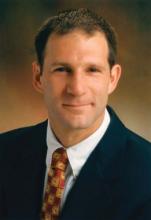You open the chart, and you read the chief complaint. Like so many other charts, you see the words, "annual exam," but something catches your eye; her date of birth – "that can’t be right"– but before you can do the math, the number stares back at you – 14 years old. The last name may or may not look familiar – she could be the daughter of one your patients – nonetheless you are about to come to face to face with a 14-year-old patient. How you handle this interaction will forever be remembered by this young girl.
At this moment, I make a calculated decision on how I will proceed. Will I stand? Should I sit? What if she is so nervous she is standing, not sitting in the chair or on the table? I refocus on what is required for an adolescent visit? Does she need an exam? Will her mother or family member be in the room?
I have found that by asking questions and expecting a one-word answer, I am prepared to move the visit along. "What can I do for you today?" This is usually met with an expressionless face and a shoulder shrug. I generally follow that with, "Did someone tell you to come here today?" If you’re lucky, you may get a verbal response, but commonly, you will get the affirmative head nod. I view this as a breakthrough. Now I try to pry, "Are you having a problem?" Again a head nod is success. Once I understand that she is there for a problem, I find that leading questions that use the "embarrassing words" make it easier for the patient to communicate. She may not want to say the word vagina or sex, so take the opportunity to say it for her.
If she is there for an "annual exam," imagine her relief when you tell her she does not need to be examined. In fact, she will not need a Pap smear until she is 21 (soon to be changed to 25). With the ice now broken and a relieved patient before you, this is the golden moment. This is the moment that I use to educate. A speculum is no longer threatening. She is now relaxed that this thing will not be used on her, and she can now listen. While holding the small narrow speculum, I say, "This is not a clamp because clamps close and a speculum is used to open." I hold the speculum in my right hand and then make a loose fist with my left hand. I place the lower lip of the speculum against my left thumb, and say, "This is what your cervix looks like, and this is as far as the speculum must be opened." I then ask her to make a fist. I hold the speculum again her hand, and I use the cytobrush and cotton swab inside her hand Then I ask, "Did that hurt?" Of course, the response is no. I will say that there are many more pain sensors on your hand than in the vagina, but the vaginal exam is embarrassing.
Once I have done this, I use a module or pictures to show her the vagina, cervix, uterus, and ovaries. This pictorial provides a visual of what the pelvic exam is intended to do.
I then show her the stirrups and say, "You can put your heels here, and then slide your bottom to the end of the table, and then we will then use the speculum. When the speculum is placed, you will feel pressure toward your bottom. If you allow your knees to fall out to the side, the exam can be over very quickly. Once we are finished with the speculum, one finger is placed inside the vagina to check your cervix, uterus, and ovaries. That’s it."
"My promise to you is that if you are ever uncomfortable, you just say stop and the exam will stop. It is much more important to me that you feel safe here in this office. It took a great deal of courage to even walk in the door today, you can always reschedule."
The new American College of Obstetricians and Gynecologists (ACOG) guidelines do not recommend a pelvic exam until the age of 21, at the time of the first PAP smear. However, the more knowledge we can provide to our adolescent patients, the less fear they may have when the time does arrive for their first exam.



